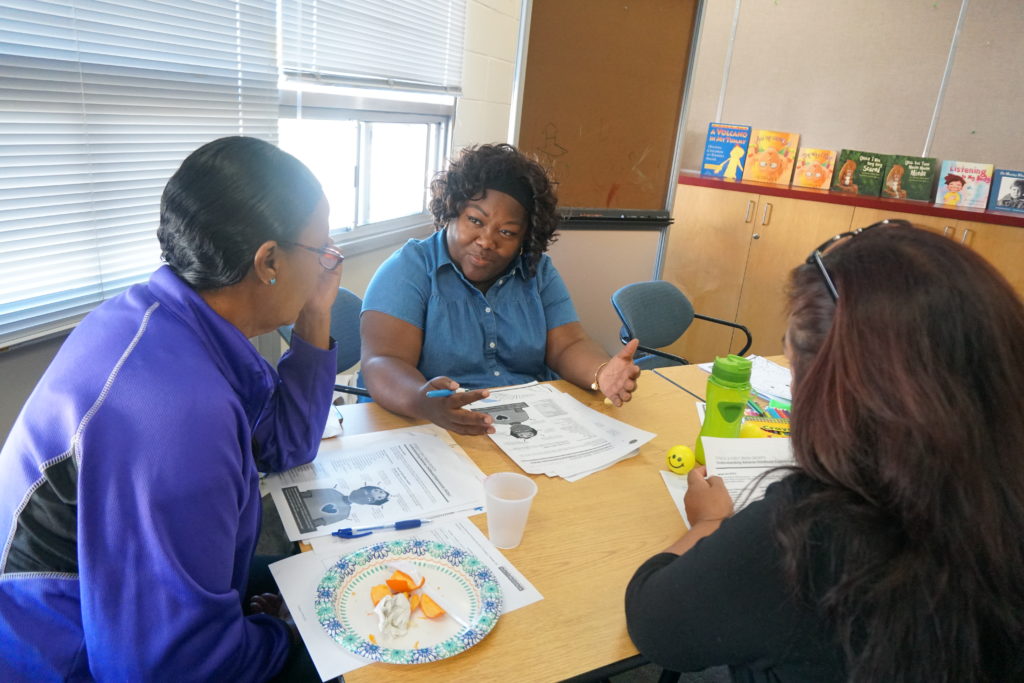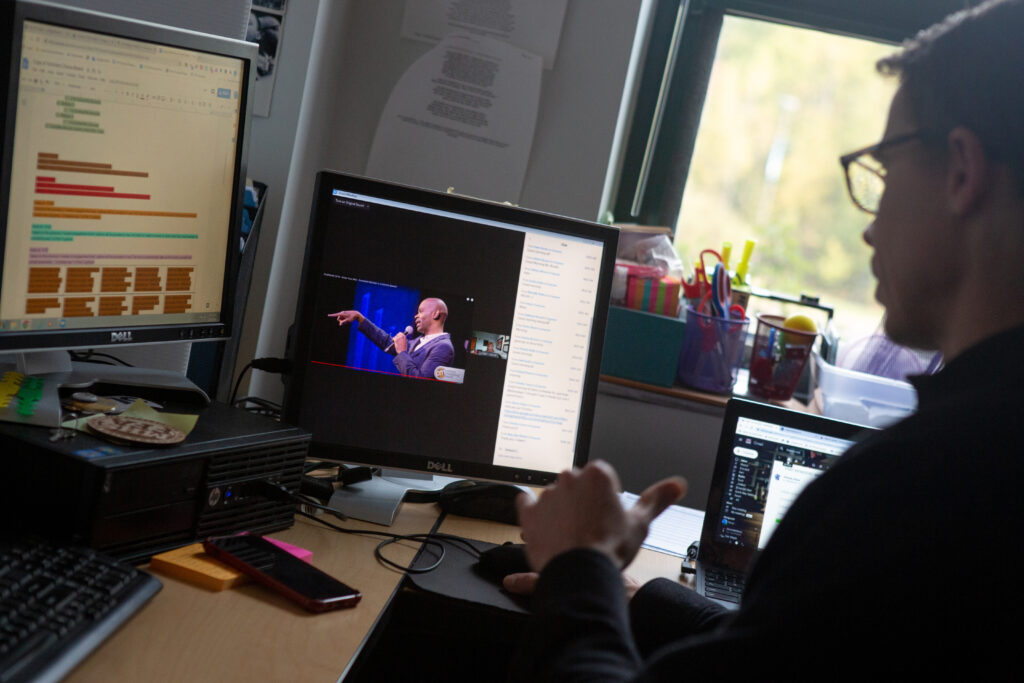
Child care providers discuss trauma at a training at BANANAS in Oakland.
Credit: Zaidee Stavely/EdSource
We live in stressful times. This, coupled with the high rate (80.5%) of children experiencing at least one adverse childhood experience by adolescence, necessitates that schools use trauma-informed practices in their daily routines.
Trauma-informed practices, or TIPS, involve understanding the potential impact of trauma exposure on a child, recognizing signs and symptoms of trauma exposure and responding in a way that supports healing and may build resilience. I
nteractive trainings help educators know how to respond to students with adverse childhood experiences, as well as what to do when a collective crisis happens, such as a natural disaster or school shooting. Educators learn and practice trauma-informed discipline, how to help regulate a stressed child, and build systemwide practices supporting student and teacher well-being.
The California Office of the Surgeon General recognized the need for trauma-informed practices training and created an interactive online program for teachers and schools called Safe Spaces. However, it is not clear how many school districts and educators have accessed the program.
A large majority of teachers (64%) want to learn how to better support students affected by trauma, according to a survey of nearly 15,000 educators by the American Psychological Association (APA). They also need support for coping with their own exposures to trauma. Teachers are often affected by the same events as their students — the pandemic, natural disasters, school shootings. And the APA survey shows educators must also contend with violence by students and parents.
Although numerous online resources exist, including those from the National Center on Safe and Supportive Learning Environments and the National Child Traumatic Stress Network, there are barriers to overcome to get trained.
Our research team asked 450 of our local educators during the pandemic about why they might not have been using these resources and found that, despite being highly motivated, teachers faced limited energy and time, some perceived a lack of administrator support, and some felt stigma about needing resources to manage their own emotions.
California needs to do more to equip teachers and administrators on how to cope with trauma in their students and for themselves.
One of the best ways to embed trauma-informed practices into our school systems is to start with the programs that train our future teachers. The National Association of State Boards of Education noted that only 16 states require some form of trauma-informed practices training, although the content and type of training varies.
In California, this type of training is one way a future teacher can meet professional standards, but it is not required. Perhaps if it were, future teachers would begin their careers recognizing signs of possible trauma reactions in their students and know how to approach it with a mindset of “What happened to you?” instead of “What is wrong with you?” They would have tools to support their students with coping and handling emotions, and know when to refer for additional supports.
Teachers already in the classroom also need trauma-informed training, but it’s often lost in the many competing demands districts must balance. Some districts can offer professional development days for their teachers where in-person trauma-informed practices training is available. If more districts could offer this, teachers would have dedicated time to learn the current best practices for supporting students with adverse childhood experiences or with the initial aftermath of school crises, such as psychological first aid for students and teachers.
They would learn how to support the safety of students with disabilities in emergencies through Especially Safe, which was developed by parents and educators who lost students in the Sandy Hook school shooting. Especially Safe offers free resources to help schools better plan, prepare and teach safety in a way that is accessible to all students.
Training teachers in trauma-informed practices is not enough if they are in a school environment that is not prioritizing this; therefore, training of administrators is essential as well. And administrators have their own questions about how to support the whole school community following crises and other events. Therefore, it is best if everyone in the school community gets this training.
Although many organizations offer trauma-informed resources and trainings to schools, we need to scale up these programs to reach all schools and teacher education programs. Funding must cover not only program costs, but also dedicated teacher and administrator time to take these programs as part of professional development days.
Until tragedies make the news, better training in trauma-informed practices may not make the top of the list of priorities, but we need to change this.
•••
Erika Felix, Ph.D., is a professor of clinical psychology at the University of California, Santa Barbara and a Public Voices Fellow of The OpEd Project.
The opinions expressed in this commentary represent those of the author. EdSource welcomes commentaries representing diverse points of view. If you would like to submit a commentary, please review our guidelines and contact us.



